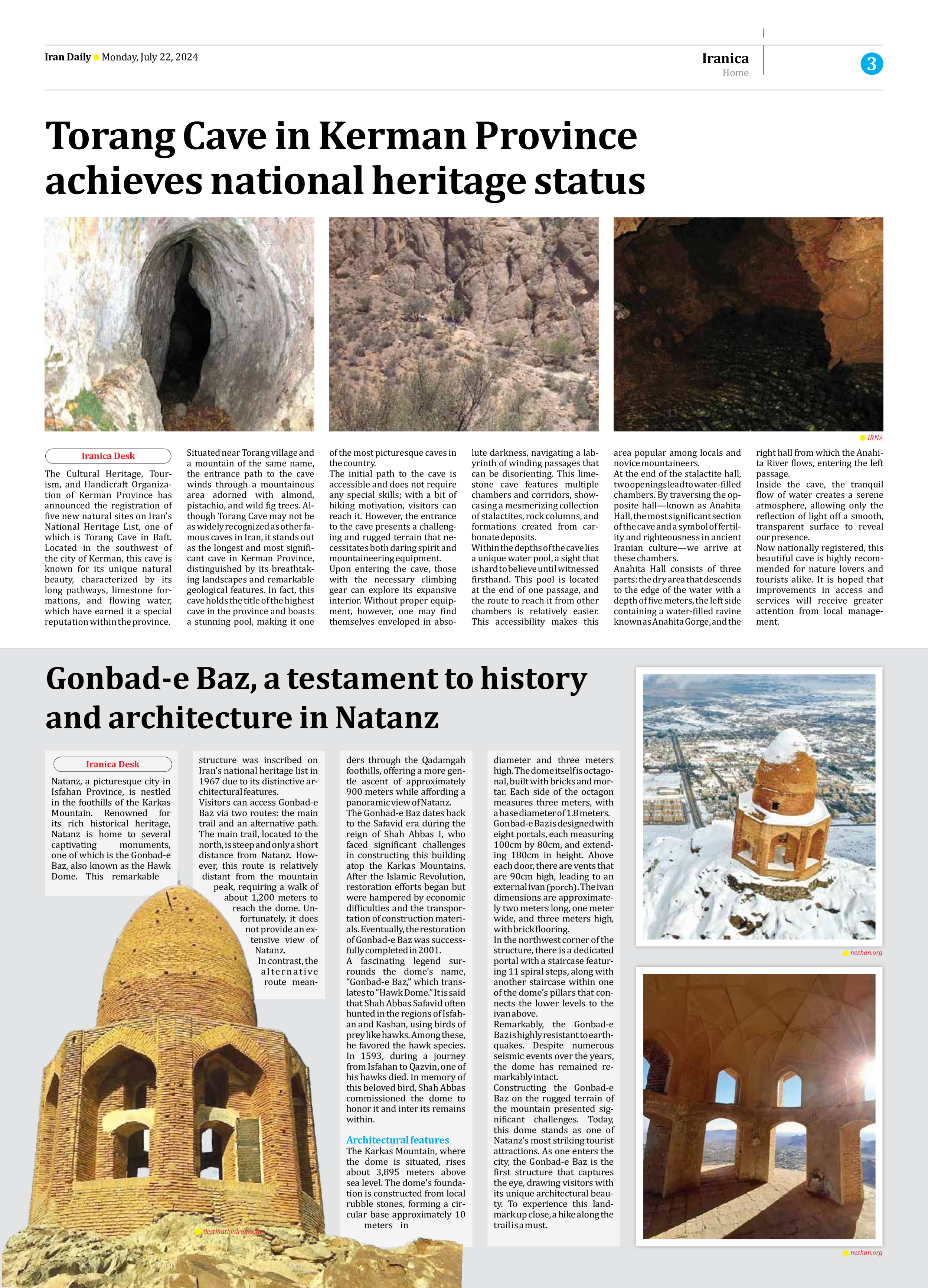
Torang Cave in Kerman Province achieves national heritage status
The Cultural Heritage, Tourism, and Handicraft Organization of Kerman Province has announced the registration of five new natural sites on Iran’s National Heritage List, one of which is Torang Cave in Baft. Located in the southwest of the city of Kerman, this cave is known for its unique natural beauty, characterized by its long pathways, limestone formations, and flowing water, which have earned it a special reputation within the province.
Situated near Torang village and a mountain of the same name, the entrance path to the cave winds through a mountainous area adorned with almond, pistachio, and wild fig trees. Although Torang Cave may not be as widely recognized as other famous caves in Iran, it stands out as the longest and most significant cave in Kerman Province, distinguished by its breathtaking landscapes and remarkable geological features. In fact, this cave holds the title of the highest cave in the province and boasts a stunning pool, making it one of the most picturesque caves in the country.
The initial path to the cave is accessible and does not require any special skills; with a bit of hiking motivation, visitors can reach it. However, the entrance to the cave presents a challenging and rugged terrain that necessitates both daring spirit and mountaineering equipment.
Upon entering the cave, those with the necessary climbing gear can explore its expansive interior. Without proper equipment, however, one may find themselves enveloped in absolute darkness, navigating a labyrinth of winding passages that can be disorienting. This limestone cave features multiple chambers and corridors, showcasing a mesmerizing collection of stalactites, rock columns, and formations created from carbonate deposits.
Within the depths of the cave lies a unique water pool, a sight that is hard to believe until witnessed firsthand. This pool is located at the end of one passage, and the route to reach it from other chambers is relatively easier. This accessibility makes this area popular among locals and novice mountaineers.
At the end of the stalactite hall, two openings lead to water-filled chambers. By traversing the opposite hall—known as Anahita Hall, the most significant section of the cave and a symbol of fertility and righteousness in ancient Iranian culture—we arrive at these chambers.
Anahita Hall consists of three parts: the dry area that descends to the edge of the water with a depth of five meters, the left side containing a water-filled ravine known as Anahita Gorge, and the right hall from which the Anahita River flows, entering the left passage.
Inside the cave, the tranquil flow of water creates a serene atmosphere, allowing only the reflection of light off a smooth, transparent surface to reveal our presence.
Now nationally registered, this beautiful cave is highly recommended for nature lovers and tourists alike. It is hoped that improvements in access and services will receive greater attention from local management.







